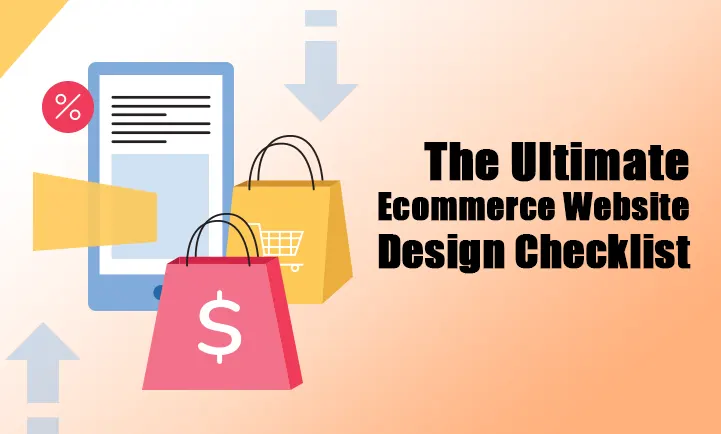
Welcome to the world of ecommerce, where your Ecommerce website design serves as the digital doorway to your online store. It’s like the inviting signboard that beckons customers to step inside and explore. But how do you ensure your virtual storefront is not just attractive but also user-friendly? Fear not! We’ve put together the ultimate checklist to guide you through Best ecommerce website design and every step of creating a website that not only looks good but also works like a charm.
In this comprehensive checklist, we’ll walk you through the ecommerce website design tips for designing an effective ecommerce website. From user experience to performance optimization, we’ll cover everything you need to know for ecommerce website design essentials that not only look great but also drive sales and keep customers coming back for more. So, grab your notepad and get ready to elevate your ecommerce website nz with our ultimate website design checklist.
What is an Ecommerce website?
An ecommerce website is an online platform where businesses sell products or services to customers over the internet. These websites enable users to browse through various products or services, add items to a virtual shopping cart, and complete transactions securely using electronic payment methods.
Ecommerce websites typically feature product catalogs, search functionality, shopping cart systems, and secure checkout processes.
The Importance of E-commerce Website Design
The importance of ecommerce website design cannot be overstated, as it directly influences the success of an online business. Here’s why it’s crucial:
- First Impressions Matter: Your website is often the first point of contact between your brand and potential customers. A well-designed ecommerce website creates a positive first impression, instilling trust and confidence in visitors.
- User Experience (UX): A seamless and intuitive user experience is essential for keeping visitors engaged and guiding them through the purchase journey. Intuitive navigation, clear calls-to-action, and easy checkout processes can significantly impact conversion rates.
- Brand Image and Identity: Your website design reflects your brand identity and values. Consistent branding across all elements of the website helps build brand recognition and loyalty among customers.
- Mobile Responsiveness: With a growing number of consumers using mobile devices to shop online, having a mobile-responsive website is crucial. A mobile-friendly design ensures a consistent and optimized experience across different devices, improving accessibility and customer satisfaction.
- Search Engine Optimisation (SEO): An ecommerce website with a well-optimized design can rank higher in search engine results, driving organic traffic and increasing visibility to potential customers.
- Conversion Optimisation: Effective website design elements, such as clear product descriptions, high-quality images, and persuasive CTAs, can influence purchasing decisions and improve conversion rates.
1. User Experience (UX) Design:
- Mobile Responsiveness: Ensure your website functions seamlessly across all devices, from desktops to smartphones.
- Intuitive Navigation: Design a clear and logical navigation menu that helps users easily find what they’re looking for.
- Clear Calls-to-Action (CTAs): Use compelling CTAs to guide users towards desired actions, such as “Add to Cart” or “Checkout”.
- Fast Loading Speed: Optimise your website’s loading time to reduce bounce rates and improve user experience.
- Consistent Branding: Maintain consistency in branding elements like colors, fonts, and imagery throughout your website.
2. Visual Design:
- High-Quality Images and Graphics: Use visually appealing images and graphics to showcase your products and enhance the overall aesthetics of your website.
- Clean and Modern Layout: Choose a clean and modern layout that is visually pleasing and easy to navigate.
- Color Scheme and Typography: Select a color scheme and typography that reflects your brand identity and enhances readability.
- Product Presentation: Display your products in an organized and visually appealing manner, with clear descriptions and pricing.
3. Functionality:
- Search Functionality: Implement a robust search feature that allows users to quickly find specific products.
- Easy Checkout Process: Streamline the checkout process to reduce cart abandonment rates and improve conversion rates.
- Secure Payment Options: Offer secure payment options to instill trust and confidence in your customers.
- Inventory Management: Keep track of your inventory in real time to prevent overselling and stockouts.
- Product Filtering and Sorting Options: Provide users with convenient filtering and sorting options to help them find products that meet their specific needs.
4. Performance Optimisation:
- Optimisation for Search Engines (SEO): Optimise your website for search engines to improve visibility and attract organic traffic with better SEO techniques.
- Website Speed Optimisation: Ensure your website loads quickly to provide a smooth browsing experience for users.
- Image Optimisation: Compress images to reduce file sizes without compromising quality, improving load times.
- Minimization of Redirects and Broken Links: Regularly check for and fix any broken links or unnecessary redirects to maintain a seamless user experience.
5. Trust and Security:
- SSL Certificate: Secure your website with an SSL certificate to encrypt sensitive information and protect customer data.
- Trust Badges and Security Seals: Display trust badges and security seals to reassure customers of the safety and security of their transactions.
- Shipping and Return Policies: Clearly communicate your shipping and return policies to build trust and transparency with customers.
- Customer Reviews and Testimonials: Showcase positive customer reviews and testimonials to build credibility and trustworthiness.
6. Accessibility:
- ADA Compliance: Ensure your website complies with ADA guidelines to make it accessible to users with disabilities.
- Text Alternatives for Non-Text Content: Provide descriptive alt text for images and other non-text content to improve accessibility for screen readers.
- Keyboard Navigation: Ensure all website functions and features are accessible via keyboard navigation for users who rely on it.
- Clear and Readable Text: Use clear and readable fonts with sufficient contrast to ensure content is easy to read for all users.
7. Analytics and Tracking:
- Implementation of Google Analytics or Similar Tools: Set up analytics tracking to monitor website traffic, user behavior, and other key metrics.
- Tracking Key Performance Indicators (KPIs): Define and track KPIs such as conversion rate, bounce rate, and average order value to measure the effectiveness of your website.
- Conversion Rate Optimisation (CRO) Strategies: Implement CRO strategies such as A/B testing and user feedback analysis to continuously optimise website performance and conversion rates.
8. Testing and Iteration:
- Regular Testing for Usability and Functionality: Conduct regular usability testing to identify any issues or pain points and make necessary improvements.
- A/B Testing for Design Elements and Features: Test different design elements, CTAs, and features to determine what resonates best with your audience and drives conversions.
- Continuous Improvement Based on User Feedback: Collect and analyze user feedback to identify areas for improvement and make iterative changes to enhance the user experience.
Conclusion:
As we’ve explored throughout this checklist, website design is not just about aesthetics; it’s about creating an experience that converts visitors into loyal customers. In the highly competitive world of ecommerce, a well-designed website can be the difference between thriving success and fading into obscurity.
Now armed with our comprehensive checklist, you have the tools and knowledge to optimize your ecommerce website for maximum impact. Don’t underestimate the power of a well-thought-out design—use this checklist as your roadmap to ensure every aspect of your website is fine-tuned for success.
Whether you’re an expert ecommerce user or just starting out, remember that continuous improvement is key. Implement the checklist, track your progress, and never stop striving for excellence in your ecommerce endeavors. Your success story starts here with our Expert Website Design Service! Contact Kaseo Web for Valuable Content and SEO Services.





